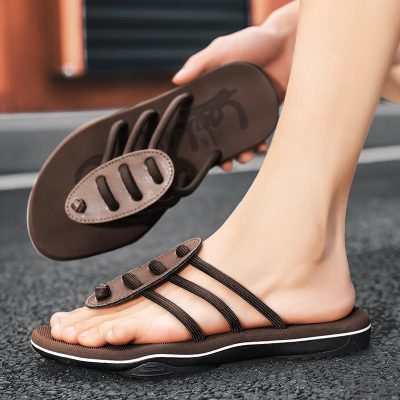Men’s flip flops, known by various names around the world, hold a special place in many cultures, serving as more than just footwear but also as symbols of tradition, comfort, and lifestyle. From the beaches of Brazil to the bustling streets of Japan, the design and significance of men’s flip flops vary widely across different cultures. In this article, we’ll explore the cultural influences behind men’s flip flops around the world.
- Brazil (Havaianas): In Brazil, flip flops are more than just a summer accessory – they’re a way of life. The iconic Havaianas brand, founded in 1962, has become synonymous with Brazilian culture, representing the laid-back and vibrant spirit of the country. Havaianas are worn by people of all ages and social backgrounds, from beachgoers to celebrities, making them a true cultural phenomenon.
- Japan (Zori): In Japan, traditional flip flops known as “zori” have a long history dating back centuries. Made from natural materials like rice straw or tatami, zori are worn with traditional Japanese attire such as kimono or yukata. Today, modern versions of zori are still worn on special occasions like festivals and ceremonies, serving as a symbol of Japanese heritage and craftsmanship.
- India (Chappals): In India, flip flops are commonly referred to as “chappals” and are worn by millions of people across the country. Chappals come in various styles and materials, from simple rubber thongs to intricately embellished leather sandals. They are worn for everyday activities, religious ceremonies, and special occasions, reflecting the diverse cultural traditions of India.
- Australia (Thongs): In Australia, flip flops are known as “thongs” and are a staple footwear choice for beachgoers and outdoor enthusiasts. With their casual and laid-back vibe, thongs are synonymous with the Australian beach lifestyle, representing a sense of freedom and relaxation. They are often paired with board shorts and sun hats for the ultimate Aussie summer look.
- Hawaii (Slippers): In Hawaii, flip flops are referred to as “slippers” and are worn year-round due to the tropical climate. Hawaiian slippers are often adorned with colorful designs and floral patterns, reflecting the natural beauty of the islands. They are worn by locals and tourists alike, symbolizing the Aloha spirit of hospitality and warmth.
- Mexico (Huaraches): In Mexico, traditional flip flops known as “huaraches” have been worn for centuries by indigenous communities. Made from woven leather or plant fibers, huaraches are known for their durability and comfort. They are worn for both everyday activities and special occasions, serving as a symbol of Mexican craftsmanship and cultural heritage.
- Greece (Sandalia): In Greece, flip flops are known as “sandalia” and have a long history dating back to ancient times. Greek sandals were traditionally made from leather and featured intricate designs inspired by mythology and art. Today, modern versions of Greek sandals are worn by locals and tourists alike, reflecting the timeless elegance and craftsmanship of Greek culture.
- Thailand (Sandal): In Thailand, flip flops are commonly referred to as “sandal” and are worn by people of all ages for everyday activities and special occasions. Thai sandals come in a variety of styles and materials, from simple rubber thongs to ornately decorated leather sandals. They are often worn with traditional Thai attire, reflecting the rich cultural heritage of the country.
- USA (Flip Flops): In the United States, flip flops are a ubiquitous summer footwear choice, worn by people of all ages and backgrounds. From casual beach outings to backyard barbecues, flip flops are a symbol of summer relaxation and fun. They come in a wide range of styles and colors, catering to diverse fashion preferences and lifestyles.
- Conclusion: Men’s flip flops hold a special place in cultures around the world, serving as more than just footwear but also as symbols of tradition, comfort, and lifestyle. Whether it’s the iconic Havaianas of Brazil, the traditional zori of Japan, or the laid-back thongs of Australia, the design and significance of flip flops vary widely across different cultures, reflecting the unique cultural heritage and values of each region.








